The modern Vulcan script is the most common in everyday life. While most educated members of society can easily read traditional calligraphy and it is also quite prevalent, they rarely think of it as purely utilitarian. Making a conscious decision to use it can even reinforce a subtle (or even not-so-subtle) interpersonal barrier. For example, If after a casual disagreement one were to send an informational, yet unapologetic message to the other party formatted in the traditional script, the receiving party may be more likely to harbor a grudge. Not every aspect of the vulcan way of life is logical.
Origins
The letters of the modern script evolved over many centuries from the ancient logogram system which is commonly referred to as Tik-Nahp-Zukitaun (“each thought script”) or simply Tik-Nahp (“each thought”). The language for which Tik-Nahp was originally conceived was very different from Modern Golic Vulcan. Each symbol was logographic and speakers of different languages used the common written forms to communicate with each other in very much the same way that the Classical Chinese of Terra can function. Different clans in different geographic areas reading it might pronounce it very differently. Here is a sample of a model paragraph (“Stonn killed the le-matya”) in both Tik-Nahp on the left vs. the modern script—Iyi-Gotavlu-Kitaun—on the right. Notice the isolation of characters in the original system vs. the way they are linked and flow on the right in the modern script Golic Vulcan language.
Everything about these two languages and systems is different, EXCEPT for the fact that the individual letters used on the right were forged out of a recycling of the glyphs of the characters on the left. There were thousands of glyphs in use in the pre-Surakian age. For Modern Golic Vulcan 46 phonetic letters are in common use. These are supplemented by several other marks for compound words, indicating proper names, general punctuation, numeral, etc.
To re-imagine the nature of the way the modern script works, let’s compare how a Vulcan word might be written in Terran Egyptian hieroglyphs.

Here we see oT’Khasi (The Honorable Planet Vulcan) rendered in the sounds available from ancient Egyptian. A cartouche is used in reference to the fact that Vulcan writing would mark this with an an ahm-glat to signify a proper name—even of a planet. Notice that while the Egyptian symbols are originally pictographic (and quite literal—from a bird to a feather), they can also represent individual sounds.
In most cases the characters of Tik-Nahp are visually more abstract than those of Egyptian. From this abstraction perspective, the correlation is closer to Chinese.
But the function more closely mimics what is happening with Egyptian. A specific phonological feature of the word is taken so that the logographic symbol becomes a simple letter. Only the sound remains important. Instead of “Z” is for “zebra” it becomes “Zebra” is for “z” or rather “DZHarel” is for “dzh”.
The vowels in the modern script are a not full characters, but rather distinctive parts extracted from full characters. Punctuation and other subtle reforms have also evolved over time to suit the needs of the modern language.
The Old with the New
There are a few of the ancient characters which appear commonly in modern life. Those who have attained Kolinar in particular often identify themselves overtly with the ancient word for the discipline. Here on the left we see the opening lines of the Akteibuhl-Van-Kar t’Kolinar (The Kolinar Attainment Ceremony) rendered in Tik-Nahp. To the right the individual character for ‘Kolinar’ and below a stylized version of the character embroidered on the robe of one of the devout.
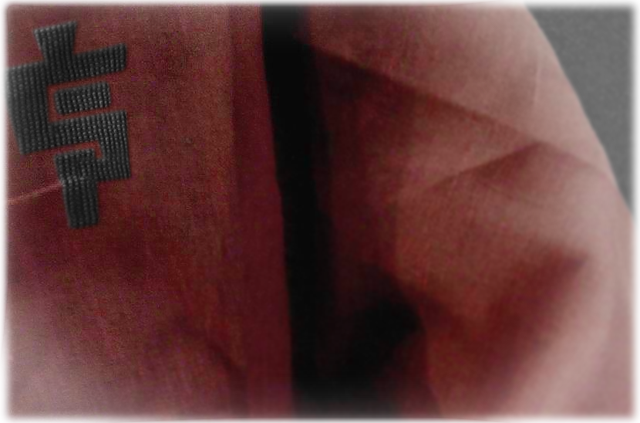
It is also common to see the glyphs for morning (asal), afternoon (aru), and evening (khru) used to clarify the times of day with numbers.
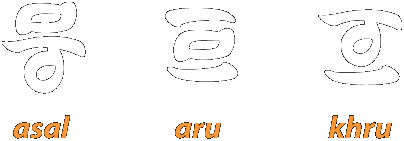
In Common Use
This text shows the inventory of every sound in Modern Golic Vulcan rendered in the standard practice paragraph. The text flows from left to right top to bottom. Again, note how unlike the ancient Tik-Nahp in which the individual characters stand apart, in the modern script one letter flows into the next. It is commonly accepted that this is the influence of the traditional calligraphy playing out in the pragmatics of the standard Vulcan alphabet.
In the following table every letter is called out individually along with common punctuation and the numerals. The labels in orange designate the words from which each letter originated. The capitalized letter of each label clarifies which sound value is assigned to each Vulcan alphabetic letter.
It is noteworthy that the consonants of el’ru-kitaun (handwriting) are originally modeled on these forms as opposed to the formal traditional calligraphy. Over time the shapes have simplified in most cases.
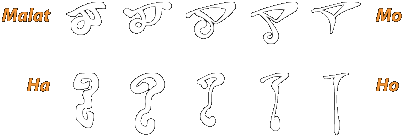
In certain instances however, the modern handwriting letter is significantly different from the concordant glyph in the standard script. Various factors influence these differences including several cases in which the handwriting letter is based on a different ancient character than the the one that was adopted and formalized for the standard script. Because Vulcans don’t really value everyday handwriting, the illogic of the differences typically does not concern them.
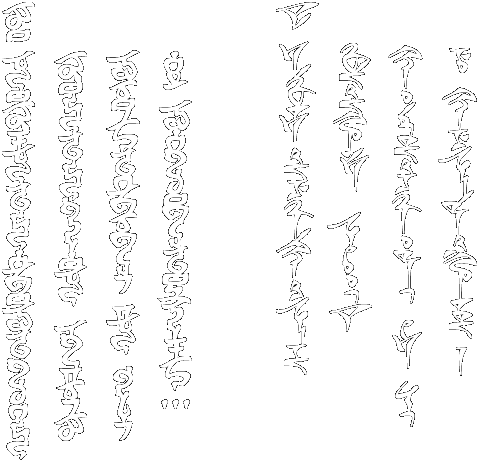
As the most practical Vulcan writing system in use today, this is the one that would be relied upon most commonly for mundane tasks like non-verbal data interactions with technology, etc. It is generally unnecessary to do much ‘typing’ in a world in which devices typically understand speech better than other sentient beings, but even in the age of Spock, sometimes it’s better to just quietly work away.





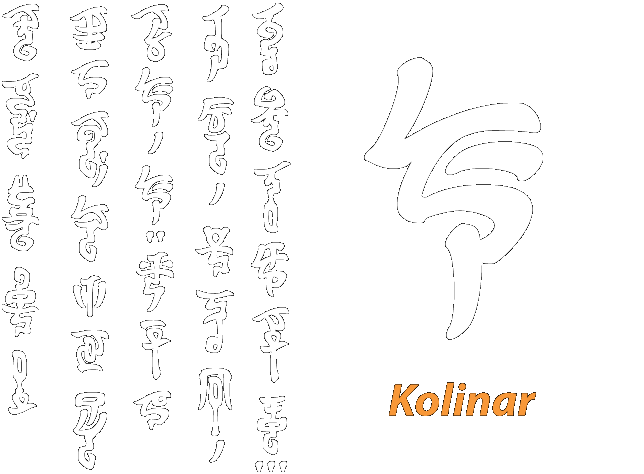
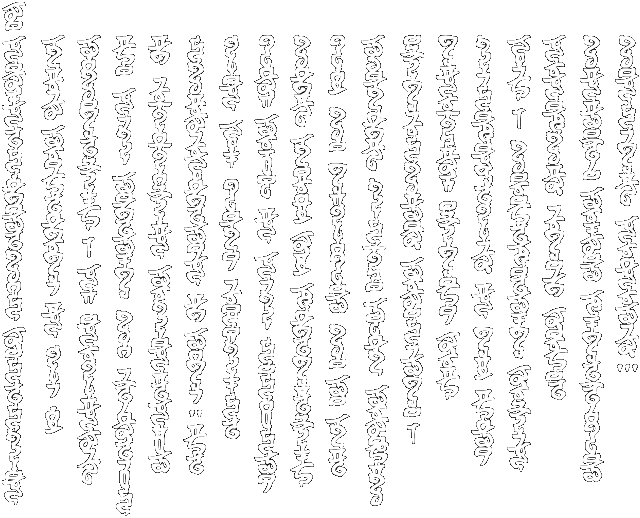
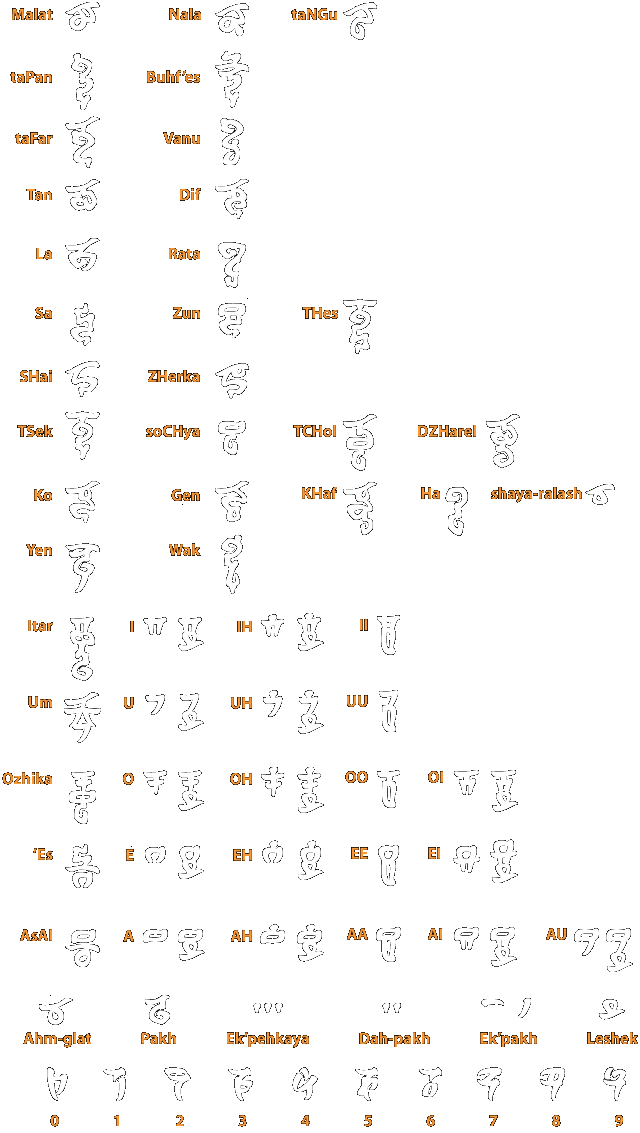

I come to study and find this new article. I’m just thinking in Chinese when I saw, o’Briht’uhn, the similarities between. And Egyptian too! I’m going to read the entire handwriting -or try, it looks hard, complicated and beautiful. Also, the keyboard is fantastic; I want one! As ever, is a pleasure to read you, my dear friend.
Sochya bosch.
Nartayalar!
M.
I enjoyed reading thanks! Do u have anything on the ancient Vulcan writing?
Other than HERE under “Origins”, I’m afraid not.
i love the Vulcan language and writing i would really love to know more about it an i would love to learn how to read it. you give the Vulcan pronunciations of the letters but not the English. i would like to know the english meaning of the Vulcan letters.
oMartyn,
Thanks for your comment.
The nature of your request is not 100% clear to me. Is it that you would like examples of how to write English using the Vulcan scripts? The modern letters don’t really carry inherent meanings. Just as A, B, & C represent SOUNDS in English (and other languages), so do the Vulcan letters. If you’re referring to the meanings of the traditional names, I’ve never created a full list. “Malat” means “nature”. “Buhf’es” means “perfection”. “Dif” means “long life”. Those would be the historical words from which the modern sounds were taken for M, B, D. Is this what you’re referring to?
s’Briht’uhn
writing English using Vulcan scripts. i would like to know the English translation of Vulcan script letters. this is what i mean.
OK. Understood. Here you go:
malat = NATURE
nala = CELL (as in a biological unit)
tangu = IDEAL
tapan = PROCESS (psychological)
buhf’es = PERFECTION
tafar = DISCIPLINE (contemplative practice)
vanu = CEREMONIAL
tan = DONATION; GIFT
dif = LONG LIFE
la = HERE
rata = CONCEPT
sa = MALE
zun = LETTER (of a writing system)
thes = ENGRAVING
shai = THE SELF
zherka = EMOTION
tsek = COLUMN (structural)
sochya = PEACE
tchol = BAY (a body of water)
dzharel = JAREL (a type of Vulcan horse)
ko = FEMALE
gen = LANGUAGE
khaf = BLOOD
ha = LIFE
yen = A FORGETTING (of something)
wak = TIME
itar = RECOGNITION; THANKFULNESS
um = CLAW
ozhika = LOGIC
’es = QUALITY; CONDITION
asal = MORNING
Keep in mind that these are the historical or original meanings that now only serve as the NAMES of the letters for the purpose of spelling.
This is great! I love the work you’ve done. It is well thought out.
Where did the image of the keyboard come from? I’m guessing a screenshot from either movie IV or XI.
oGeil,
Thanks for the encouragement. The keyboard image was created in my living room. I’m afraid there is nothing canonical about it, but I hope one day that perhaps the franchise will embrace actual working language for the Vulcans of Star Trek. It’s puzzling to me that the Klingons in the 1980s were deemed deserving of their own real language and the Vulcans were not. Cross your ta’al for us all that one day it will happen and add another new dimension to the world of the Federation.
s’Briht’uhn
o’s’Briht’uhn,
I agree on the fact Vuhlkansu need a real language too. Maybe IthInganHol was an experiment by Mike to see if it could be done. And possibly how popular it would be with fans. Vulcan, I feel, will have its day with advent of the internet for rapid information decemination,and fans’ passion for learning it.
o’Briht’uhn
I would like to make am inquiry:
We get the names of the various kinds of punctuation; however, can we have an explanation of their functions and or the FSE Equivalents? I am particularly confused as to the purpose of “Leshek”.
s’Surok
oSurok,
These things are rather well-documented in the user’s manual for the beta-testers of the font, Zun. I will be sending out an updated version very soon that should fix a major bug that causes an incompatibility with Word on Windows. Do you want me to include you in that distribution? If so, please mail me directly as skladan —at— korsaya —dot— org.
Once Zun is officially released, I will post the documentation in this section. For the time being, I’m only giving it to beta-test-related folks.
Wa’itaren na’otranush fa’ong.
s’Briht’uhn
o’Briht’uhn
I would be immensely pleased to be included in that distribution! I will strive to be patient.
s’Surok
I think something that would be awesome to have would be a novel written in modern Vulcan script or Vulcan calligraphy.
Nafai. Hi sos’eh dang-palikau veh fna’ta thakau na’savan-don-tak t’Surak.
Acknowledged. But, perhaps it would be best to start with the teachings of Surak.
Na’nisa kenan t’nash-veh — kuv aitlu veh kitau – na’li-fal – *orensuozhikao* svi’nash-nuf ha.
Ri kup-itaren nash-veh odu hiyet na’fereikan nash-thalv.
– T’Puhku
oT’Puhku—
Wa’itaren nash-skladan s’odu kesaing. Hudokau gen-lis-tren t’odu. Kuv aitlu n’kitaun-li-fal — sanu — ya’akash’voh bai’raf-ar’kada-sakat ik SKLADAN /@/ KORSAYA /./ ORG kharing.
Sanoi na’nash-veh ta ma tu set’ko t’ozhika eh t’gen-lis t’oT’Khasi.
s’Briht’uhn
Ni’droi’ik nar-tor — ri fai-tor nash-veh ra vesht pavesh-tor k’vath-skladan t’nash-veh. I’isha.
Na’nisa kenan t’nash-veh — kuv aitlu veh kitau – na’li-fal – °orensu° – svi’nash-kitaun — vesht dungi palikau veh k’nuhm t’°ozhika° — hi tvai nuhm goh °o° svi’nash-nuf ha.
Ri kup-itaren nash-veh odu hiyet na’fereikan nash-thalv.
oT’Puhku—
Sos’eh i’ki’ken-tor nash-veh.
Dva-tor nash-veh ta kup is-tor veh nuhm ik °o° tsuri. Svi’hiktra ik ZUN ma n’tatayan-nuhm isha, hi ri ya’bolau ta is-tor n’ish. Nam-tor dvel ik fokarikau n’rata t’dor.
s’Briht’uhn
o’Briht’uhn –
Nam-tor lof t’dah’rak nuhm sehtebuhk svi’besan ra.
oT’Laina —
I’dzhinau tu besan if.
Nuhm besan – wa’po’dah-ralash-vellar.
Ah. Nam-tor ish-sehtebuhk leshek. Nam-tor lof gla-shahtan t’ikatu’azun-ves. Ri dau n’salasharaya. Nam-tor kuhz-skurin goh.
Hi,
Do the words of the Vulcan language change based on if you are writing in Vulcan Calligraphy or Standard Vulcan Script? Thank you.
No, Lillian the words remain the same. Both scripts are parallel in the sounds that they represent. That’s a great question, though.
Tonk’peh.
I am new to the vulcan language, and i fully intend to learn it very well. It makes sense to first understand it with English letters then move on to the actual vulcan symbols. In your opinion, out of the Handwritten, Calligraphic, and script, which one would be more beneficial to learn, or rather, learn First?
Shaya Tonat,
-T’Kar
oTonk’peh —
I would say either the Calligraphic or Standard script. The Calligraphic is most popular based on inquiries I receive here.
Best of luck and my apologies for taking a long time to get back to you.
s’Briht’uhn
I’m new to Vulcan I’ve been trying to learn and if I understand this correctly then when writing in Vulcan for notes and such the capital letter in the label next to the latter is what the letter would represent in English? So if I wanted to say hello I would use EH symbols then La symbol twice then O symbol all going down from top to bottom then the next word would be placed immediately to the right? Also I cannot find the users manual as of yet and cannot understand some of the punctuation could you post a link?
Cristin,
You are correct about the reading of how to choose individual letters. The punctuation is very “under-documented” at this point. My apologies for that.
s’Briht’uhn
oBrihtuhn,
How would I write a hypen/ tel in standard script? Am I missing something?
Many thanks
Dzhenn
There is no tel (s-curve) equivalent. The “hyphen” in the standard script (Gotavlu-zukitaun) has a specific form. It looks kind of like and inverted question mark with no dot on top, but rather a little wing, it is shown in the table above as “Pakh”.
Thank you
What is the leshek used for, exactly? I typically see it at the end of words that end with a vowel, but then I found a final “a” without it. Also, what is the difference between “eh” and “heh” as conjunctions?
The leshek is often left off of the vowel “a” especially in the word ma, which means “have”. The conjunction eh occurs after words ending in a vowel. The version heh occurs after words ending in a consonant. I do not know why. It seems counterintuitive to me, but that’s how it was originally conceived by Mark R. Gardner and the VLI.
I was wondering, is there a collection of logographic glyphs and their meanings? If not, are there plans for one?
Not at this time, Avery. They are conceived more as a part of the back story of the ‘modern’ scripts, but occasionally I create “missing” ones for specific purposes/requests.
The scripts are wonderful to behold. However, for people to write it, each of the letters need the treatment you gave to several of the “ancient” letters in that article. I can sort of see the calligraphy of this script (and of that one), but sometimes its hard to decifer which of the marks would come first. Is there an order, like in Chinese, or have you worked that out yet?
There is no formal documentation of stroke order, Steve. Top to bottom is the only real guide. Unlike Chinese stroke are more likely to more right to left on the page, but not exclusively.